

Chicken wire composting
Ive recently started composting in chicken wire bins which I easily made. The wire is sold in rolls and is very easy to work with. 
This method has proven more successful in my case, than the plastic bins. As the compost is by far hotter than before. I've never had actual steam blowing in my face when digging into my compost before. 
I made sure the bin is in the shade, as to not lose moisture so quickly. 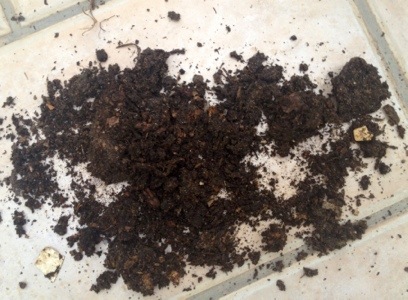
This method is cheaper to set up, and in my case cooking compost better. I can't wait to fill the entire thing, and have my future plants happy and well fed.

Not too wet
I've been juicing fruits and vegetables everyday and since then, I've been tossing all of the left over juice pulp in y compost This is probably giving my compost too much nitrogen all at once, so it started getting soggy and matted, and once that happens in your compost for whatever reason, it will start to stink a little. It's because anaerobic bacteria; the bad guys will decompose matter where there is no oxygen and high moisture. They give off a bad smell and slimy green stuff. 

To get the good guys back in, you should introduce oxygen back to the mix. This could easily be done by either laying out the compost for a while, and mixing it back together. Compost does happen fast in Kuwait, so do take advantage of the hot summer.

Summer Composting
It's very hard to enjoy outdoor gardening in the summer, this is why after clearing my raised beds of sun-burned plants, I now leave the beds to bake in the heat.. I will not bother to save my plants if I will not take care of them. it's too hot for me to do a good job. This makes summer my composting time. I've been having kitchen scraps, coffee grounds, garden prunings, and grass clippings piled over the last few months, and guess what? It's perfectly matured. 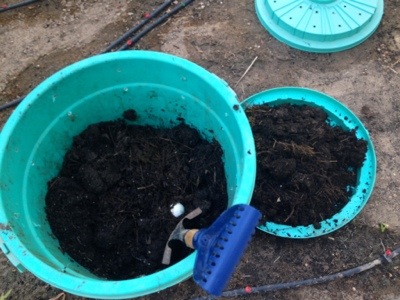
Since I will not be doing any gardening until September, I decided to mix this mature compost into new compost ingredients to speed up their process. 
These are some dried up grass clippings from my lawn. I made sure to dry them up into a crispy brown, so they would contain more carbon than nitrogen. 
Grass clippings don't go in alone (although they can), I toss kitchen scraps like fruits and vegetable wastes, tea bags, tissues, egg shells (which are excellent for root development) and coffee grounds. 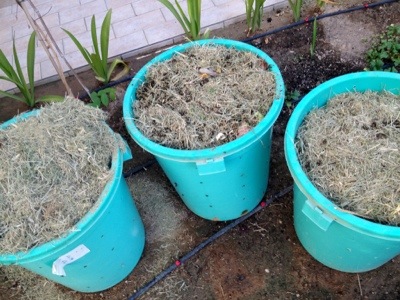
After mixing the ingredients and filling the bins, I add enough water to keep it moist, but not soggy. 
And that's all it takes to make crumbly, rich compost, which my vegetables love. 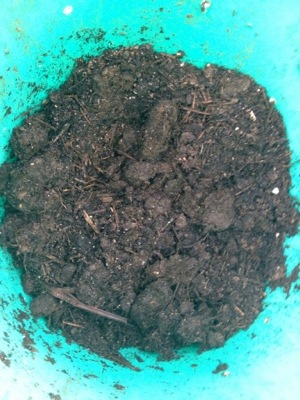
Homemade compost will not only reduce your carbon foot print, it will make your vegetables grow larger, healthier, and tastier. You may find some bugs in your compost, and this is why no one should compost indoors, in my case I have ants, wood lice, and spiders.. It's completely normal, and I'm especially happy to have wood lice shredding away at my compost, and helping it form. They're really harmless. 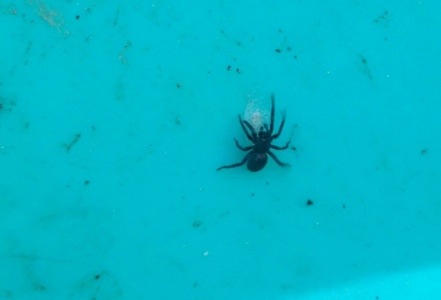
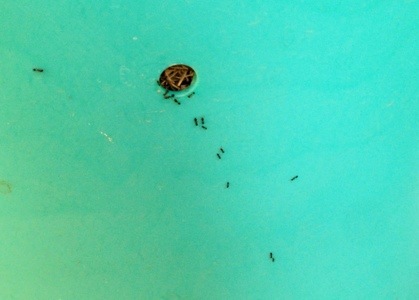
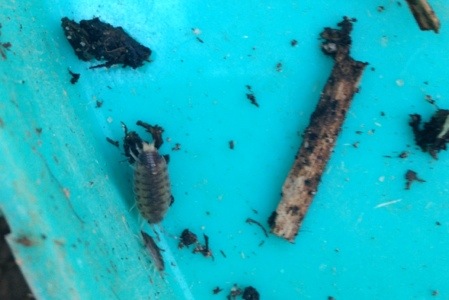
To have bug free compost before using it in your garden, just lay it out in the early sun, and most insects will go away from the heat, while others get picked by hungry birds. 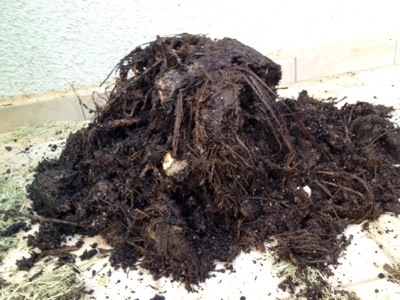
Get composting! Update: Just 2 days after mixing, look what I have.. 
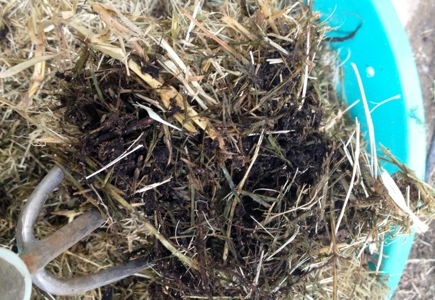
Look at how quickly everything is breaking down, and this isn't even the middle of the bin, so its cooking even faster inside. With a quick and simple composting system, I got brown results in 2 days, so I must be doing something right.

Container Garden
 Here is a closer look
Here is a closer look 


 You can mix and match your favorite leafy greens and herbs, you can forget about the spacing rules like I have here, because we have a short winter, I won't wait for the plants to reach their full size to harvest, instead I will harvest individual leaves. This has been working really well. The plants don't mind being crammed in a small space.
You can mix and match your favorite leafy greens and herbs, you can forget about the spacing rules like I have here, because we have a short winter, I won't wait for the plants to reach their full size to harvest, instead I will harvest individual leaves. This has been working really well. The plants don't mind being crammed in a small space. This vigorously growing tomato plant was grown from cutting, meaning I inserted a pruned stem from another plant into the container, and watered it until it developed its own root system. Its growing exceptionally well, I didn't even get to stake it yet, and its sprawling on the wall and on the ground. Seeing my container plants' progress and success in my homemade compost encourages me to make as much as I can for my future plantings. My soil components are again 1/3 homemade compost + 1/3 peat moss + 1/3 perlite You can place the containers anywhere that's in full sun, and enjoy the fresh vegetables all season!
This vigorously growing tomato plant was grown from cutting, meaning I inserted a pruned stem from another plant into the container, and watered it until it developed its own root system. Its growing exceptionally well, I didn't even get to stake it yet, and its sprawling on the wall and on the ground. Seeing my container plants' progress and success in my homemade compost encourages me to make as much as I can for my future plantings. My soil components are again 1/3 homemade compost + 1/3 peat moss + 1/3 perlite You can place the containers anywhere that's in full sun, and enjoy the fresh vegetables all season!

New Compost Batch
 The reason my grass clippings are N+C is because I leave them in the sun for about 2 weeks before I put them in the bin, this way the dried brown grass reacts with the still fresh grass to make fast compost.
The reason my grass clippings are N+C is because I leave them in the sun for about 2 weeks before I put them in the bin, this way the dried brown grass reacts with the still fresh grass to make fast compost.  [/caption]
[/caption]  You can see that the wood shavings take longer to compost than the grass and kitchen scraps.
You can see that the wood shavings take longer to compost than the grass and kitchen scraps. Im also making new compost tea to water and spray the plants with.
Im also making new compost tea to water and spray the plants with.

Steeped Compost Tea
Compost in any form is a plant's idea of gourmet health food. Made into tea, it's the ideal liquid fertilizer, especially for young plants. Compost tea helps plants grow stronger and more productive and, evidence suggests, can protect against disease. The tea can be sprayed on the plants or used instead of water for a soil drench. I'm making compost tea the inexpensive and simple way, make sure you're using non-chlorinated water.
1- Empty about a cup and a half of mature compost into an old sock.  2- tie the sock.
2- tie the sock.  3- toss it in a bucket of water, here I am recycling an Rawdatain plastic water gallon.
3- toss it in a bucket of water, here I am recycling an Rawdatain plastic water gallon.  4- stir the mixture 5- keep stirring it as often as you can for a couple of days, stirring allows oxygen to enter the mixture in order for aerobic bacteria to do their job. Update: Here is the compost tea two days later:
4- stir the mixture 5- keep stirring it as often as you can for a couple of days, stirring allows oxygen to enter the mixture in order for aerobic bacteria to do their job. Update: Here is the compost tea two days later: 
It smells a little sweet and earthy, no bad smell at all!

Hardening Off
 [/caption] Even after the temperatures drop, conditions outside in the garden are still much harsher than your home grown vegetable seedlings are accustomed to. If you were to take those sensitive plants and move them directly into the garden there’s a good chance that they would not survive the transition. What the vegetable plants need is a hardening off period where they can slowly adapt to the more intense light, winds, temperature variations, and other conditions that they will encounter in the outdoor world. Hardening off requires time but the process itself is a simple one. Begin by carefully transporting your seedlings to a somewhat sheltered location where they can get their first taste of what life outdoors is going to be like. This initial exposure should be brief, only an hour or two during the early morning or late evening hours.
[/caption] Even after the temperatures drop, conditions outside in the garden are still much harsher than your home grown vegetable seedlings are accustomed to. If you were to take those sensitive plants and move them directly into the garden there’s a good chance that they would not survive the transition. What the vegetable plants need is a hardening off period where they can slowly adapt to the more intense light, winds, temperature variations, and other conditions that they will encounter in the outdoor world. Hardening off requires time but the process itself is a simple one. Begin by carefully transporting your seedlings to a somewhat sheltered location where they can get their first taste of what life outdoors is going to be like. This initial exposure should be brief, only an hour or two during the early morning or late evening hours. 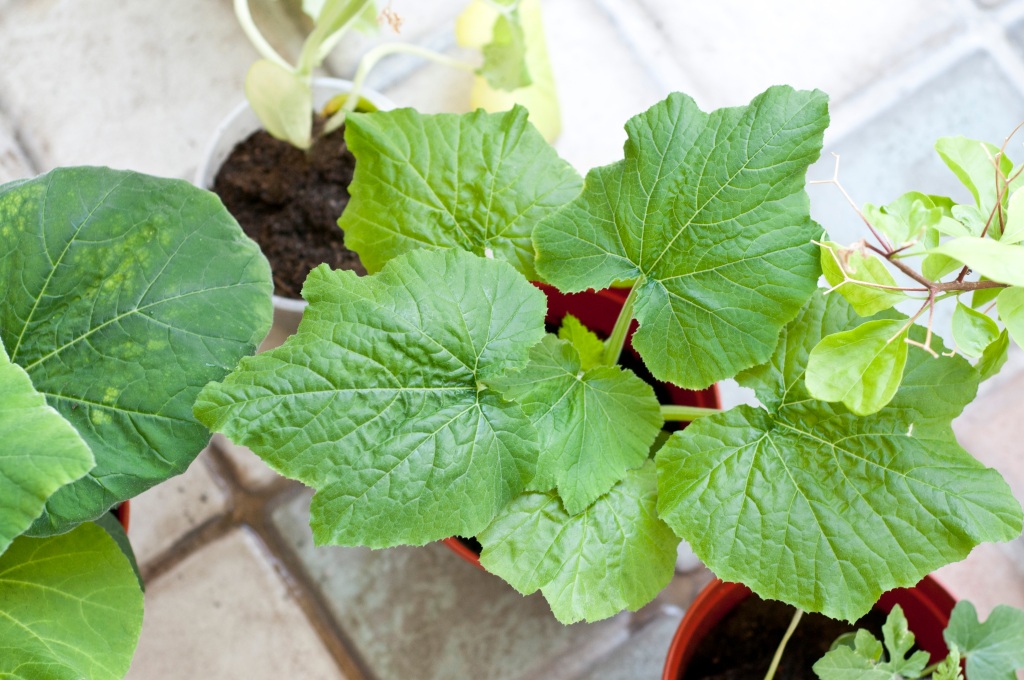 Start the hardening off process a couple of weeks before you anticipate planting the seedlings out into the garden. Each day you will be moving the plants outside for increasing lengths of time, allowing them to gradually get used to the sunshine, wind, rain, and other outdoor conditions. In my case I've moved them to a warm area with direct sun through glass windows. The area is not as hot as it is outside, so I can leave them all day. The Terra-cotta pots are from TrueValue.
Start the hardening off process a couple of weeks before you anticipate planting the seedlings out into the garden. Each day you will be moving the plants outside for increasing lengths of time, allowing them to gradually get used to the sunshine, wind, rain, and other outdoor conditions. In my case I've moved them to a warm area with direct sun through glass windows. The area is not as hot as it is outside, so I can leave them all day. The Terra-cotta pots are from TrueValue. 
- root-bound zucchini plants
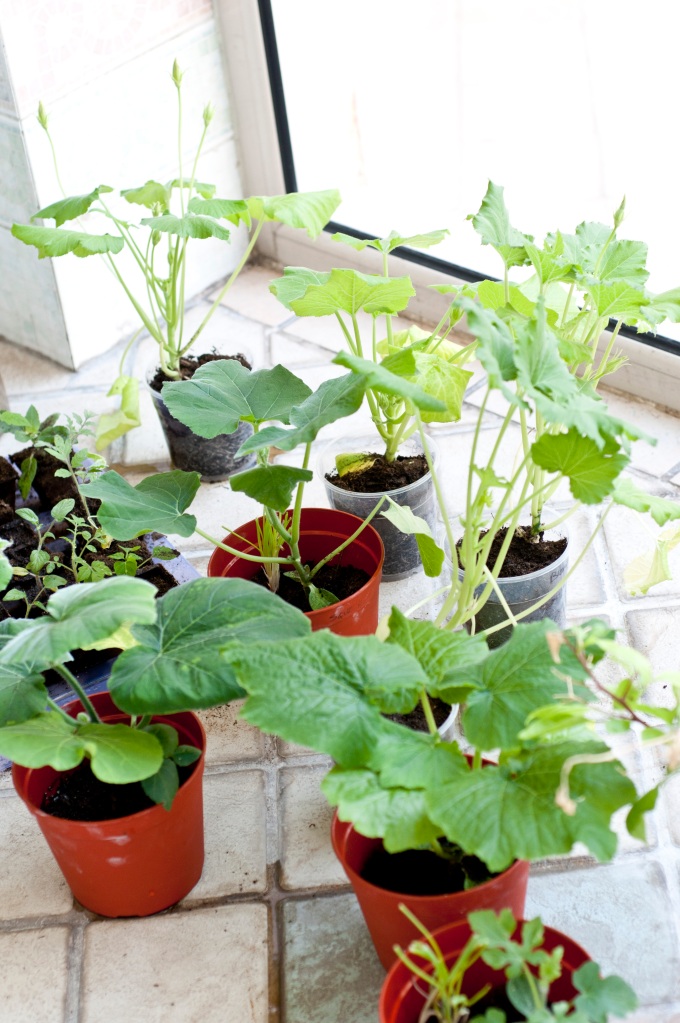 Don't skip this crucial step when transferring your seedlings to their containers or in the ground.
Don't skip this crucial step when transferring your seedlings to their containers or in the ground.

Sifting Compost
 This compost took under 3 months to transform from grass clippings, orange peels, cardboard, melon rinds, and more, to this rich dark magic fertilizer and mulch.
This compost took under 3 months to transform from grass clippings, orange peels, cardboard, melon rinds, and more, to this rich dark magic fertilizer and mulch.  Sifting compost is done by pushing the compost through the holes or by shaking the sifter repeatedly. Make sure the container under the sifter is larger in size; to collect everything, because your compost is very valuable . I used a plastic basin.
Sifting compost is done by pushing the compost through the holes or by shaking the sifter repeatedly. Make sure the container under the sifter is larger in size; to collect everything, because your compost is very valuable . I used a plastic basin.  Collect and toss the unfinished compost (left in the sifter) in your compost bins for another round of composting. Can you believe this entire process took under three months!
Collect and toss the unfinished compost (left in the sifter) in your compost bins for another round of composting. Can you believe this entire process took under three months!

You don't have space
A lot of people really like the idea of gardening, but don't imagine themselves doing it since they don't have space. You don't need to be planting things in the ground, container gardening is perfectly fine! and maybe even better, since you completely control the soil. Containers come in all shapes and sizes and they will fit your lifestyle and space. If you live in an apartment, you may have a balcony that is perfect for container gardening, or a wide enough window sill outside your window to fit a container with all your favorite cooking herbs! space really isn't an issue. Anything will grow in compost rich soil in full sun, you just need to fit its roots in their correct size container! Tomatoes need a minimum size 5 gallon container, and herbs will fit really anywhere thats about 8 inches wide and deep. The Square Foot Gardening method I'm adopting for my garden is essentially a container method. So find a good spot around your house that receives about 8 hours of sunshine and you'll have a nice kitchen container garden to last you from September to May. 
Here's a photo update on my seedlings: 
 Here's something I found interesting, This is a French Marigold seedling escaping its very peculiar seed:
Here's something I found interesting, This is a French Marigold seedling escaping its very peculiar seed: 
- 1
- 2







